
Dick Pasfield
North West Australian Fishing Writer
Dick has been barramundi fishing in Lake Kununurra and the Ord River System for decades and has spent a lot of time before and after stocking figuring out how the barra work in this system. When he’s not fishing, Dick is writing about fishing and has authored 95 articles so far for popular fishing magazines.
Dick’s Top Cambridge Gulf Barra Tips
- This is a magical piece of water, but given its location and 7-9m tidal range, expect whirlpools, storm fronts, rough seas, strong currents, dirty water and other hazards. Watch the weather, talk to locals, carry appropriate gear and let others know where you’re going.
- The creeks to the north of the Ord River mouth tend to have clearer water and are where Dick has focussed this episode on.
- Barra can be caught in this system all year around, but September to April is when the water is warmest and the fish are most aggressive. If you get a big dump of heavy rain, pack up and come home as the cold water flowing in cools the system and fish tend to go quiet.
- Tides are the main factor influencing fishing in the creeks entering Cambridge Gulf. Fish can be caught on any tide, but you need to focus on the right areas.
- Spring tides are great for fishing drains and rock bars. The mouths of drains are best fished on the last half of the outgoing tide, with fish waiting for food items to be carried down on the flowing water. Fire off a handful of casts, if no fish appear, move to the next drain. Rockbars are best fished on the last part of the outgoing tide and the first part of the incoming tide. Any time you find a drain mouth with a snag in it, there’s definitely good reason to fire off a few casts.
- Dick prefers the neapish tides, which in the Kimberley means 3-4m of water movement. These are a great time to focus on fishing snags, which are usually created by whole sections of mangrove bank that subside into the creek. Ideal snags have around 6m of water along the front, but 3m deep is fine, and fish can come into even shallower water at times. Techniques for fishing snags are outlines in the lures section, below. They can be large, although the size of the snag is not always indicative of fish numbers and sizes, and often a single stick can be holding several good fish.
- When working snags, Dick uses a very heavy drag, points his rod tip at the lure and uses his reel to impart action to the lure. Rather than the rod. When a lure gets hit he reefs the rod backwards (not upwards) so the line is pulling directly onto the reel and simultaneously takes a step backwards. This action immediately pulls the fish 40cm or so out of the snags whilst also setting the hooks. He then lifts his rod to pull the fish another 40cm. This process gives the angler the element of surprise and the fish quickly finds itself 80cm from the snag and moving in the wrong direction. He then backs off the drag so as not to strain the hooks, and can play the fish in fairly clear water.
- Whilst most anglers try to prevent a barra from jumping, Dick finds he loses few fish on the jump, and that by sweeping the rod smoothly while the fish is in the air he can force it to land facing away from structure, giving him an advantage for the rest of the fight.
- If the fishing is quiet, go for the lighter tackle and teabag a small soft vibe (see below). Not only will you pick up quality fingermark, jacks and black jewfish, but the activity will often encourage a barra to eat a lure.
Dick’s Barra Fishing Tackle
- Dick is unable to use baitcast tackle due to an injury, so routinely uses spin gear for all his barra fishing.
- A 5-10 kg rod with a 4000 size reel, 50lb braid and 100lb leader is the tackle Dick uses around snags and heavy cover.
- A 5-8kg rod, 3000 size reel, 30 lb braid and 60lb leader is Dicks gear for vibes and for fishing the mouths of drains, rock bars and other places where fish aren’t deep in structure.
Dick’s Barra Lure Selection
- The 125mm Halco Scorpion with the 5m diving bib is perfect for fishing among snags. Dick likes to start at the most upstream point of the snag as that’s where the most active and aggressive barramundi are most likely to be sitting. He spot locks or anchors 10-15m out and 10-15m up-current of the snag, then makes some searching casts around the area to test what structure is beneath the surface. Slow rolling the lure and pausing the retrieve when it hits a snag allows it to back out and rise above the structure. Once he has a mental picture of the snag Dick will make casts deep into the structure as well as parallel with the snag, working over all depths of the structure. The great thing about deep diving hard bodies is that they can be fished either shallow or deep, depending on how you work them.
- 7” Hollow Belly soft plastic lures with large T-tails are great for barra fishing and Dick puts them on 3/8 to 1oz Berkley Nitro jig heads, depending on the currents at the time. He doesn’t usually rig them weedless as he typically uses them to fish deep along the face of snags in around 6m of water. Cast parallel with the snag and work in short hops, keeping an eye on the line for signs of a take. These lures are also worth throwing around the mouth of drains and either slow rolling or mixing it up with some hops and pauses.
- Cheap 3-4” soft vibes are great for “tea-bagging” – brand name lures can be used but losses are heavy, so cheaper options may be preferred. For this style of fishing, Dick ties up to the snag and drops his lure vertically, working it with gentle hops. Choose the lure size depending on current and expect a gentle bow in the line. Be prepared to strike of the line twitches as the lure falls.
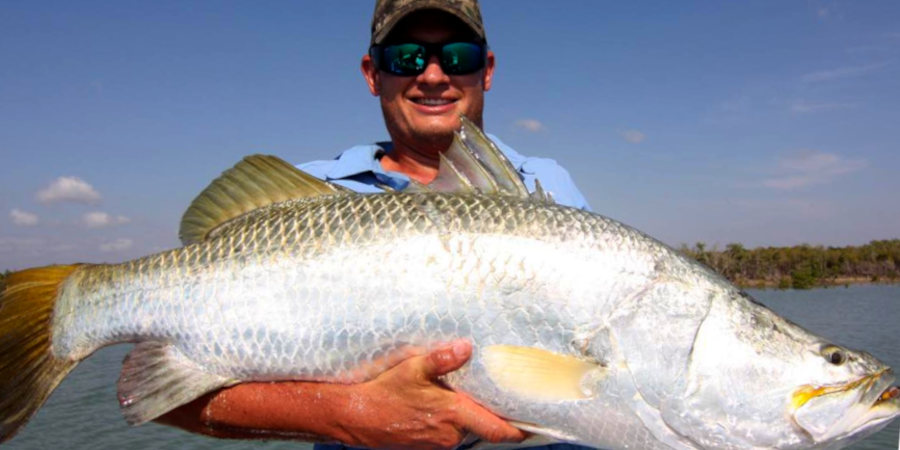
Victoria and Roper Rivers Barramundi With Trent De With
ALF EPISODE 681 Fishing for barramundi in the Victoria and Roper rivers is an experience every angler should aspire to. With unique challenges and rewarding catches, these rivers in the Northern Territory are prime spots for landing this iconic species....

Barramundi Fishing In Lakes Awoonga And Monduran: A Comprehensive Guide
Get all the advice you need for fishing Lake Awoonga and Lake Monduran. Gun angler and former guide Roderick Walmsley shares his tips here.
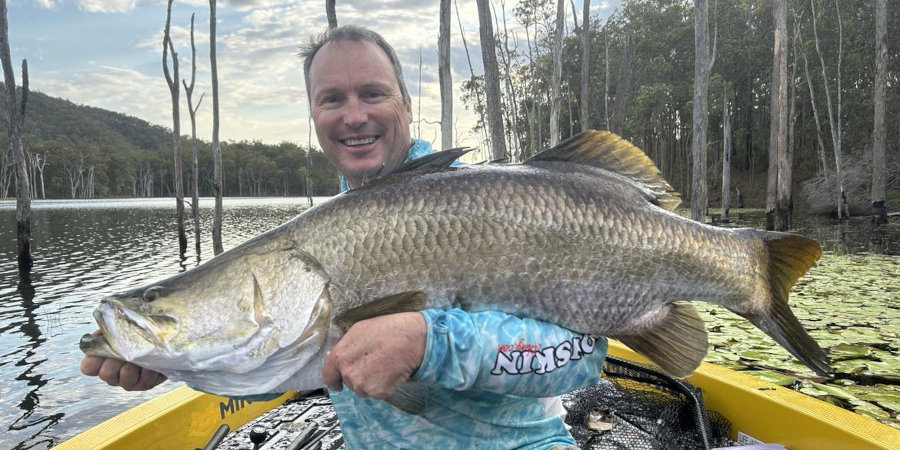
Central Queensland Barra Lakes With Roderick Walmsley
Rod's interview on barra lakes was ALF EPISODE 648. Check out our lure fishing archives for more information on Barramundi Fishing, or grab our guide to Barramundi Lures. Roderick Walmsley Fishing Writer and Personality Roderick has made a life out of fishing. A...
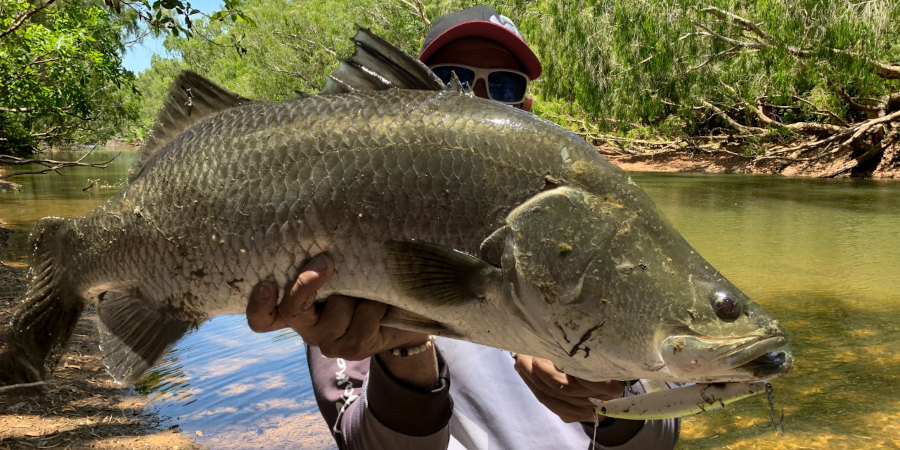
Barramundi Paradise: Lakefield National Park Fishing
Lakefield National Park is a remote barramundi wonderland, but Luke Galea reckons it’ worth “doing the miles to get the smiles” even when you’re off the beaten track already. Tune in as he explains how to plan and execute a land-based Lakefield National Park fishing odyssey.

Unravelling Trophy Wet Tropics Barramundi In The Spring
ALF EPISODE 637: This Interview With Brodie Quaas Is His Second On Wet Tropics Barramundi. You Can Check Out His Previous Episode Here. Or, Get Our Barramundi Lures Guide Brodie Quaas Far North Queensland Fishing Guide Brodie is a former NSW tournament angler who...
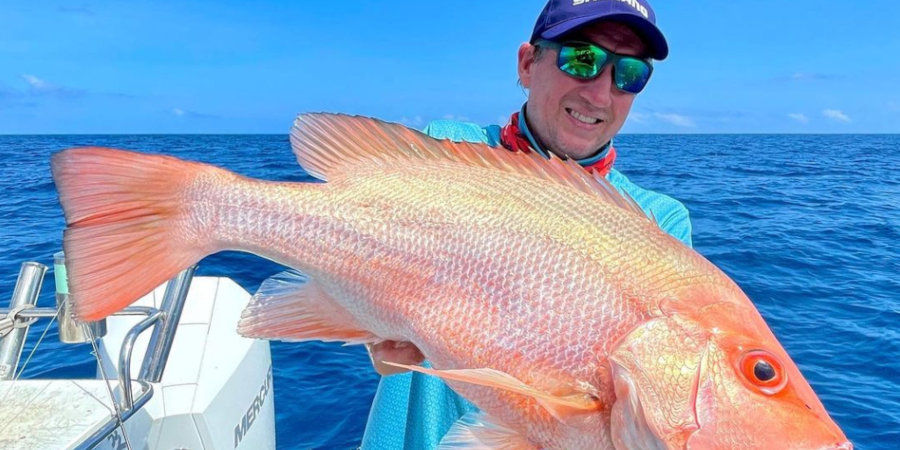
Five Groote Eylandt Fishing Adventures With Bomber Farrell
Bomber Farrell returns to the ALF podcast, this time to explain his top five Groote Eylandt fishing experiences!
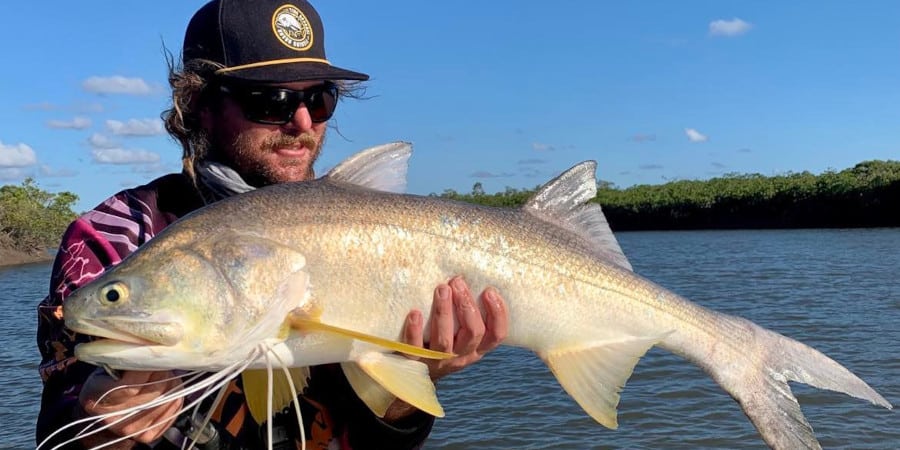
Episode 593: Great Sandy Straits Autumn Fishing With Ryan Holdsworth
The Great Sandy Strait has almost unlimited barramundi, mangrove jack and threadfin habitat….. you just need to know how to fish it. Fortunately, today’s guest Ryan Holdsworth gives his tips freely and will put you on the right course to success!
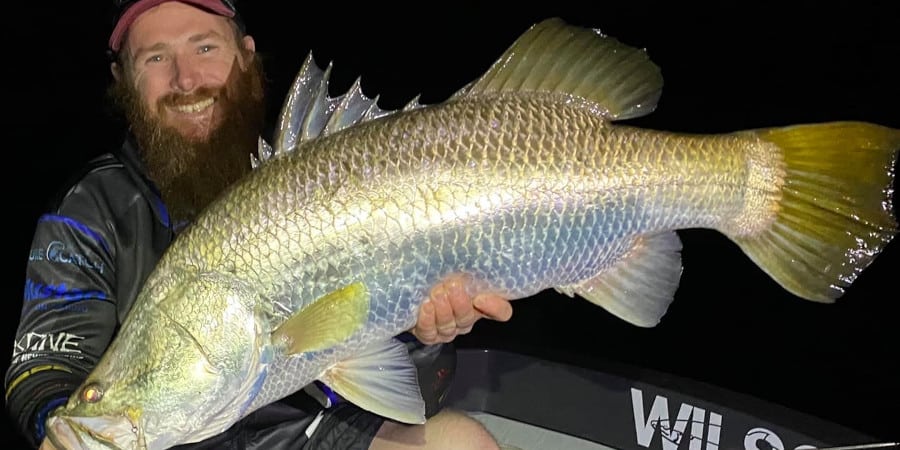
Mackay Headlands Barramundi: What You MUST Know Before You Get Smoked!
Jono Clark is probably best known as an gun impoundment barra angler, but he also chases barra (and a ton of other species) in shallow water on headlands. Today he gives us the good oil on how to go about putting some solid fish on the deck.

Victoria and Roper Rivers Barramundi With Trent De With
ALF EPISODE 681 Fishing for barramundi in the Victoria and Roper rivers is an experience every angler should aspire to. With unique challenges and rewarding catches, these rivers in the Northern Territory are prime spots for landing this iconic species....

Barramundi Fishing In Lakes Awoonga And Monduran: A Comprehensive Guide
Get all the advice you need for fishing Lake Awoonga and Lake Monduran. Gun angler and former guide Roderick Walmsley shares his tips here.

Central Queensland Barra Lakes With Roderick Walmsley
Rod's interview on barra lakes was ALF EPISODE 648. Check out our lure fishing archives for more information on Barramundi Fishing, or grab our guide to Barramundi Lures. Roderick Walmsley Fishing Writer and Personality Roderick has made a life out of fishing. A...


Just to clarify please
When Dick is fishing the up current end of a snag with a hard body he said he positions the boat upstream from the snag.
Does this mean he is bringing the lure back to the boat against the current?
Thanks for your help.
Thanks Evan, and sorry I missed this message until now…… I’ll ask Dick to come and answer it 😉
The boat is positioned up current, the cast is made a right angles (near enough) to the shore, boat and current landing upstream of the snag system. The current grabs the lure moving closer to the snag as you retrieve so at that early point the lure is moving downstream with the current as well as back to the boat in a sort of an arc. Once the lure has past the snag and its gone as far downstream as you will allow it the lure starts to cut more and more into the current until those last couple of metres the lure may well be straight behind the boat coming strait into the current. When you look at the track the lure takes it’s an arc between both landing and finishing point. Hope that explains it
Thanks Dick, I appreciate it.